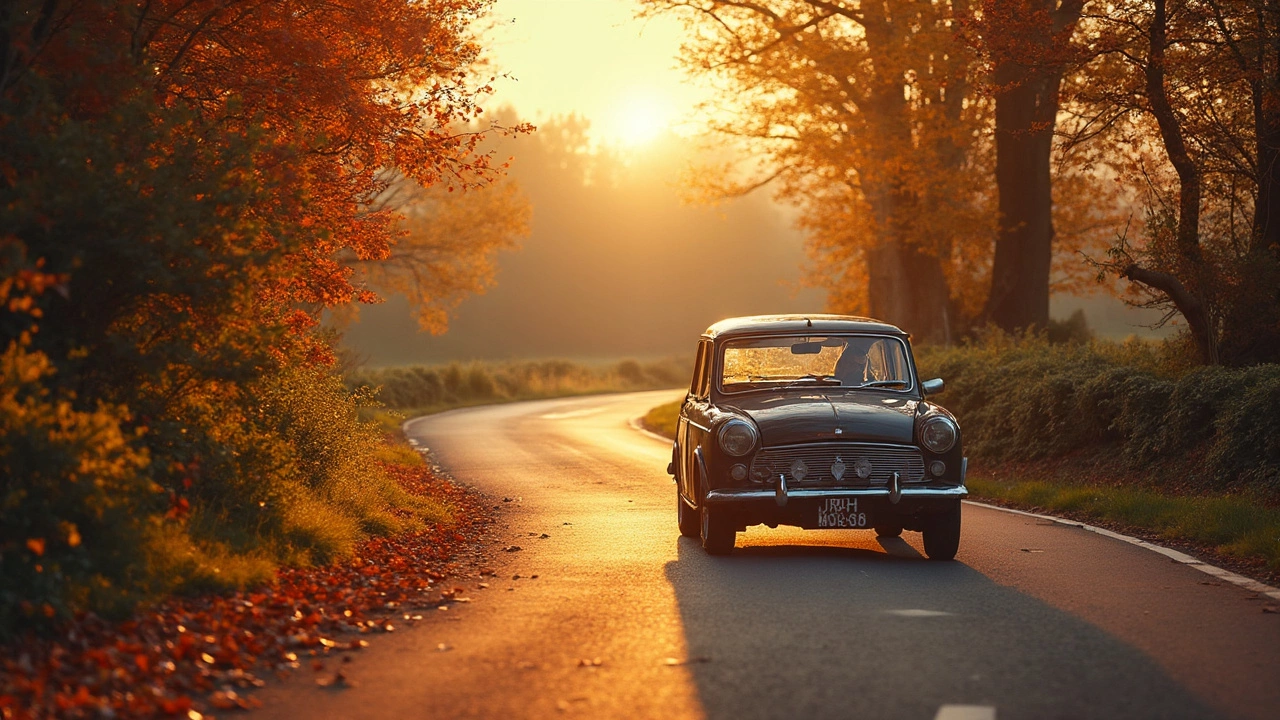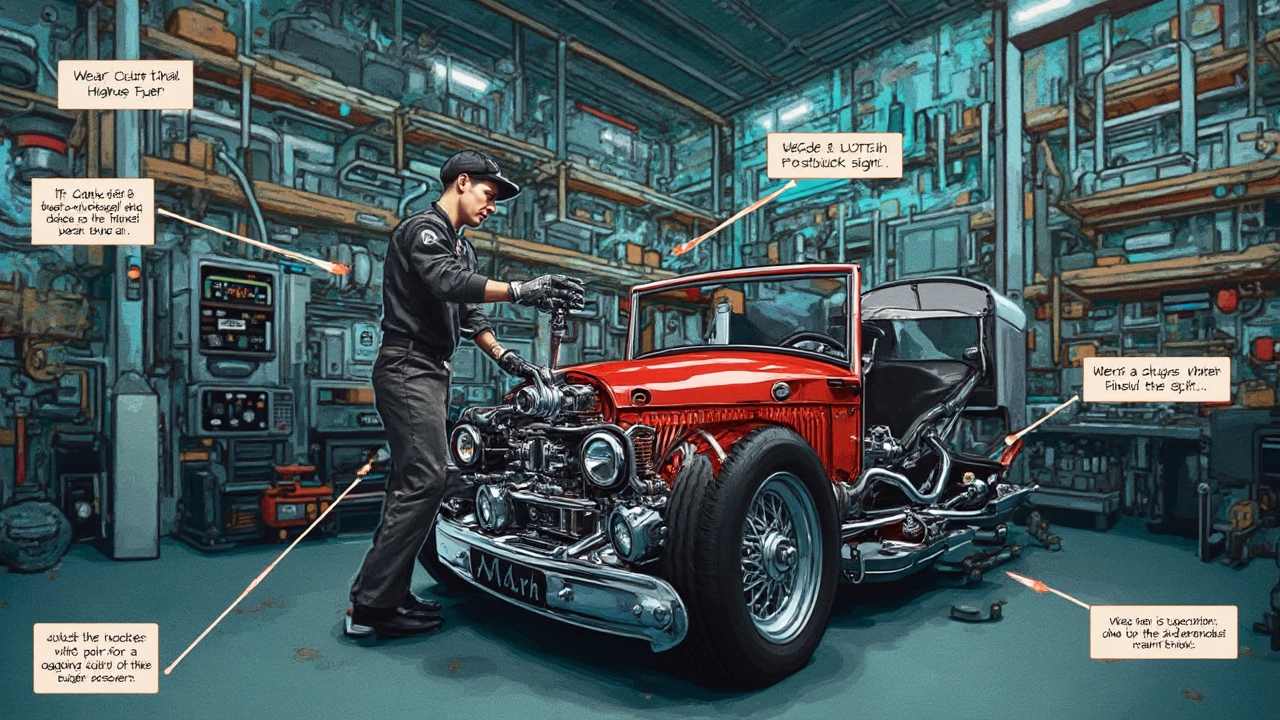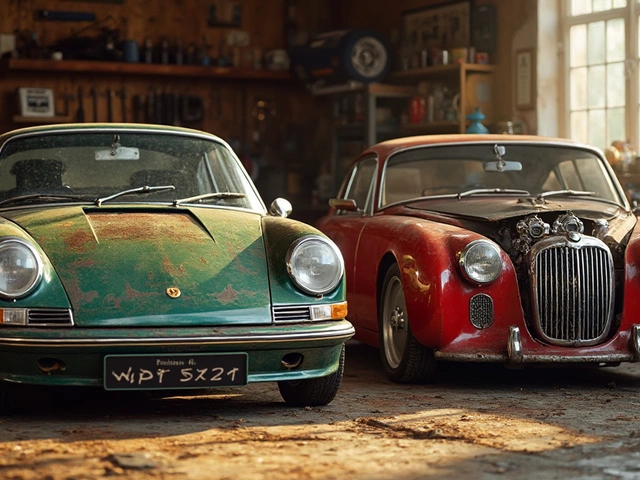You've probably heard folks mention riding the clutch, but what does that really mean? It's when you keep your foot lightly pressed on the clutch pedal, even when you're not shifting gears. Sounds harmless, right? But, in reality, it's like slowly but surely wearing out your shoes by dragging your feet everywhere. While some might think it gives them more control over the car, this habit could end up costing you in the long run.
Now, about gas mileage—does riding the clutch really help? Honest answer: nope. It doesn't help your gas mileage; in fact, it can make things worse. It leaves the clutch partially engaged, creating a slip that isn't just inefficient but also wasteful. More fuel is burnt without getting the full bang for your buck in terms of energy output. So, oddly enough, you might find yourself filling up more often instead of saving those extra drops.
- What Does Riding the Clutch Mean?
- Impact on Gas Mileage
- The Real Cost: Clutch Wear and Tear
- Tips for Optimal Clutch Use
- FAQ: Clutch Care and Fuel Efficiency
What Does Riding the Clutch Mean?
So, what's this whole thing about riding the clutch? It's a habit that some drivers fall into, often without even knowing they're doing it. Basically, you're riding the clutch when you rest your foot on the clutch pedal while driving, keeping it slightly engaged even though you're not actually shifting gears. It might feel like you're maintaining some kind of magical control over your car, but there's a catch.
When you do this, you don't allow the clutch to fully engage or disengage. Imagine trying to dance with one foot stuck to the floor — it’s just clumsy. This half-engagement means the clutch is constantly slipping, which is no good for your vehicle. Over time, this practice can lead to some serious clutch wear and tear. That's like burning your toast every morning and being surprised when you need a new toaster sooner than expected.
Let's get real: this habit doesn't help with gas mileage, and it's not doing your bank account any favors either. Besides the potential increase in fuel consumption, you’re also looking at a faster trip to a mechanic to replace the clutch kit. And if you've ever had to buy a new clutch, you know it’s not pocket change.
So, what’s the takeaway? If you’re in the habit of riding your clutch, it might be time to break it. Rest that foot elsewhere, and let your clutch do its job only when you actually need to shift.
Impact on Gas Mileage
So, let's talk about the thought that riding the clutch could somehow improve your car's gas mileage. At first glance, it might seem like a way to coast into gear changes smoothly, but here's the kicker—it doesn't help your fuel efficiency one bit. In fact, it's quite the opposite. Leaving the clutch partially engaged creates what's called

The Real Cost: Clutch Wear and Tear
Riding the clutch might feel like something that grants you mystical control over your car, but here's the kicker—it can be a wallet-drainer. When you rest your foot on the clutch pedal, even lightly, it's like chipping away at your car's lifespan with a slow but relentless pickaxe.
What's happening is the clutch remains partially engaged. This tiny bit of pressure can cause the clutch disc to slip against the flywheel, generating unnecessary heat and friction. Think of it as trying to run a marathon while somebody's constantly poking you. Over time, this causes the clutch to wear out much faster than it normally would.
Why does this matter to you? Well, replacing a clutch isn't cheap. Depending on your car model, labor costs, and parts, a clutch kit replacement can set you back anywhere from $500 to $2,500 bucks. And if you're constantly riding the clutch, you might find yourself making this investment sooner rather than later.
Here's something else to chew on: a worn clutch doesn't just mean a lighter wallet; it can also lead to decreased performance. A struggling clutch can cause issues like jerky starts and gear slipping, which make driving a real headache. If you notice these symptoms, it might be time for a check-up.
Clutch kits come with their own shelf life since they're made up of composite materials and metals that break down over time. The riding-the-clutch habit is like slashing that lifespan in half, which translates to more frequent replacements and more trips to the mechanic.
Curious about what might help prolong your clutch's life? Keeping in neutral when stopped and using the handbrake on inclines can do wonders. But most importantly, keep that foot off the clutch unless you're changing gears. Save yourself the stress and the dollars!
Tips for Optimal Clutch Use
Getting the most out of your clutch isn't a mystery—it's about making a few smart moves and sticking to them. First off, keep in mind that your clutch pedal isn't a footrest. Seriously, just take your foot off it whenever you're not shifting gears. This simple habit can save you from unwanted wear and tear.
Another thing? Master the art of shifting gears. Though it might sound basic, ensuring you're shifting at the right RPMs can make a huge difference. Ideally, shifting up somewhere between 2,500 to 3,000 RPM for most cars helps maintain fuel efficiency without putting stress on the engine or clutch.
- Don't ride the clutch: When you're coasting downhill or at a stoplight, just use the brake. Resting your foot on the clutch pedal is a surefire way to wear out the clutch early.
- Use neutral wisely: If you're stopping for more than a few seconds, like at a long red light, pop it into neutral. Keeping the clutch engaged when it's not needed means unnecessary friction—and that leads to faster wear.
- Be mindful of overheating: Holding the clutch too long or riding it on a hill can cause unnecessary heat buildup. You don't want to 'cook' your clutch, do you?
Wondering about quick data? Here's a fun tidbit: replacing a clutch can cost anywhere from $500 to $2,500, depending on your car and where you live. Knowing that, sticking to these tips could save you a lot down the road both in repairs and at the pump.
So, treat your clutch with care. It might not seem like much, but changing these driving habits could give your car a longer—and more fuel-efficient—life.

FAQ: Clutch Care and Fuel Efficiency
When it comes to taking care of your car's clutch, there's a lot to keep in mind to make sure you're not just burning fuel—but also burning through clutch kits faster than you'd like.
So, what are the basics you should know about taking care of the clutch? Simple habits like avoiding riding the clutch unnecessarily can greatly increase its lifespan. Just remember, use that clutch pedal when you're genuinely shifting, not as a footrest at the stoplights.
Now, how does this tie into gas mileage? Keeping your clutch in good shape helps with smoother gear changes, reducing fuel waste. Less slippage equals more miles per gallon. According to a quote from the experts at Clutch Co., "Maintaining proper clutch use can improve your vehicle's efficiency by up to 15%, saving you both gas and potential repair costs."
- Shift quickly but smoothly to minimize wear.
- Don't keep the clutch depressed when idling.
- Tackle hills by using the clutch less often. Master the handbrake technique instead.
Still curious about some numbers? Check out this straightforward comparison of fuel efficiency based on clutch usage in different driving conditions.
| Driving Conditions | Fuel Efficiency Improvement |
|---|---|
| City Driving | 5% less efficient when clutch is constantly partially engaged |
| Highway Driving | 3% more efficient without riding the clutch |
These tips and numbers paint a pretty clear picture: treat your clutch well, and you'll drive smoother and further without frequent trips to the gas station. So next time you're tempted to rest your foot on that pedal, think twice!




